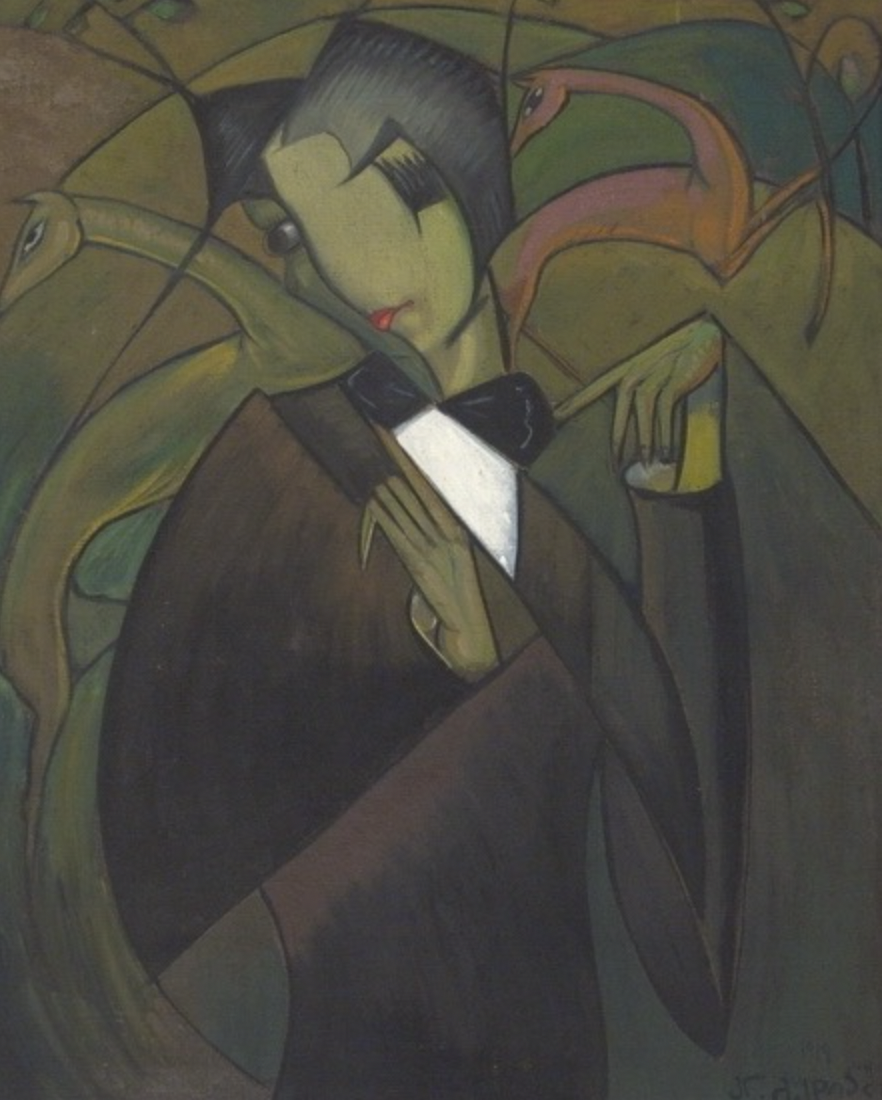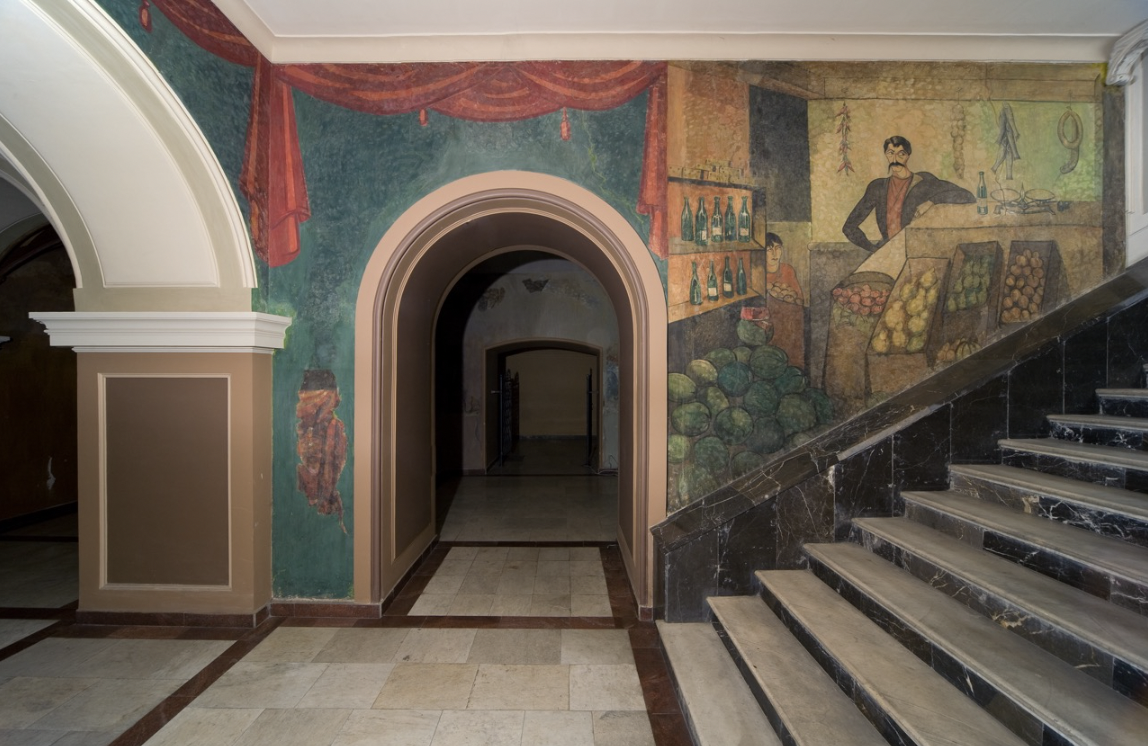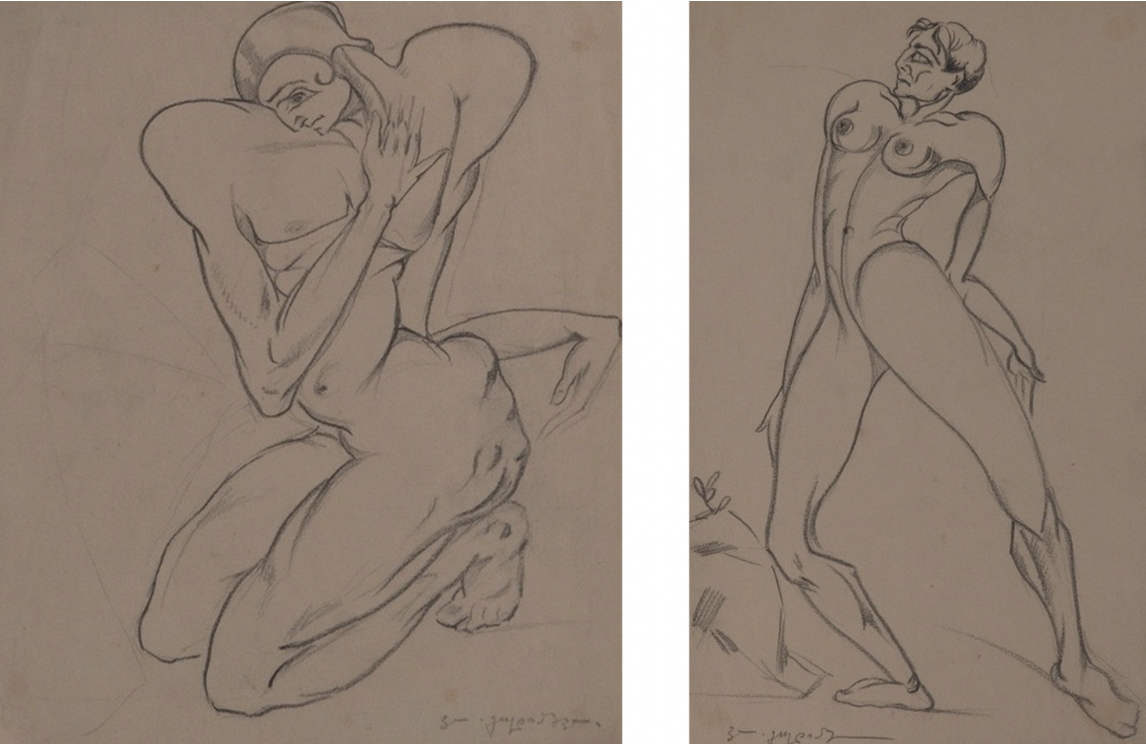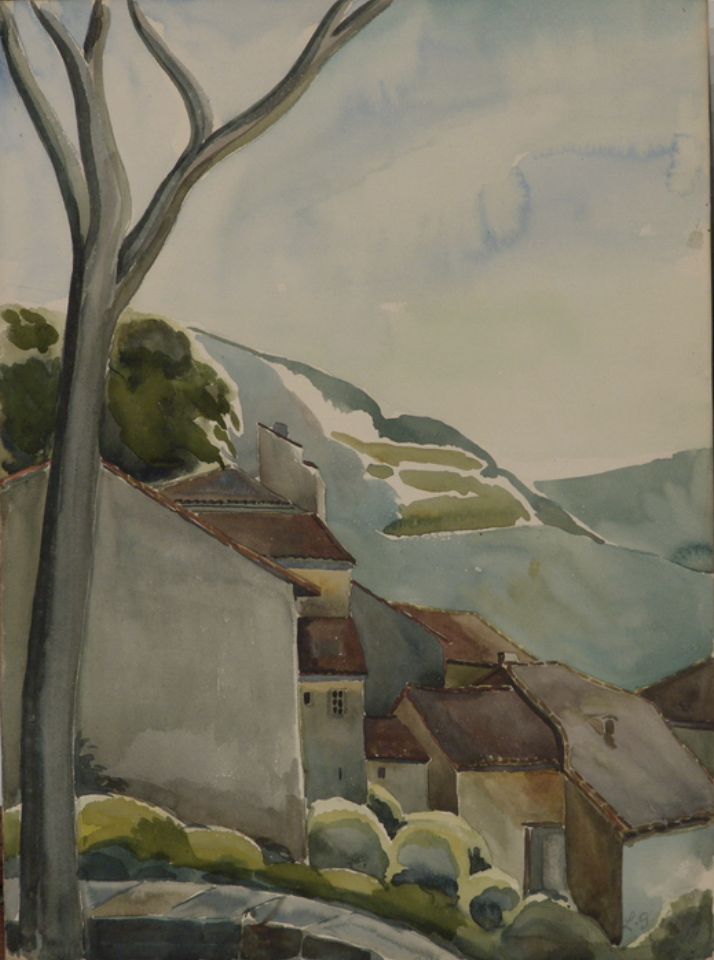
Feel free to add tags, names, dates or anything you are looking for


Lado Gudiashvili (1896-1980) is one of the most prominent representatives of Georgian modernist art and the Tbilisi avant-garde, famed for his creative vision and unique style of painting. Lado Gudiashvili was born and raised in a historic neighborhood of Tbilisi’s multicultural milieu at the turn of the 19th and 20th centuries. In 1910, Gudiashvili enrolled at the School of Painting and Sculpture, which had been established in Tbilisi in 1902 under the auspices of the Caucasian Society for the Promotion of Fine Arts. His teacher there was the renowned Tbilisi caricaturist Oscar Schmerling. In addition to honing his skills at painting and drawing, under the guidance of Iacob Nikoladze Gudiashvili also delved into the art of sculpture.

Lado Gudiashvili. Self-portrait. Canvas, oil. 90x72. 1919. Georgian National Museum. Shalva Amiranashvili Museum of Fine Arts

Lado Gudiashvili. Symphony of the South Sea. Cardboard, oil. 15,5X21. 1916. Georgian National Museum. Shalva Amiranashvili Museum of Fine Arts
After the end of World War I and the disintegration of the Russian Empire, Georgia gained independence. During this post-war period, Tbilisi emerged as a haven for individuals from diverse artistic realms – including writers, musicians, poets, and painters. Tbilisi was transformed into a truly international city as these creative minds sought refuge in its vibrant cultural environment. It is noteworthy that between 1916 and 1919, Lado Gudiashvili stood out as the most actively engaged of Georgian modernist artists in Tbilisi’s dynamic artistic scene. He played a pivotal role in collaborating with the futurists who settled in Georgia during this period. Avant-garde art issues were discussed in literary circles, salons, and artistic cafés – among which “The Fantastic Tavern," "Kimerioni," "The Argonauts' Boat," "The Peacock's Tail," and "Imedi" (Hope) were particularly popular. In 1917, Lado Gudiashvili joined the “Futurist Syndicate,” which was founded under the initiative of Aleksei Kruchonikh and Ilia Zdanevich. In early 1918, the group's debut performance was held at the café "Imedi." The artists painted an interior wall of "Imedi" in cubist style. Lado Gudiashvili also contributed significantly to the artistic ambiance of another popular meeting spot for the Blue Horns and the Futurists: the "Fantastic Tavern," which opened in 1917. He painted a substantial portion of the interior walls and ceiling at this establishment. In 1919, together with Davit Kakabadze, Kirill Zdanevich, Ziga Valishevsky, and Sergei Sudeikin (who was residing in Tbilisi at the time), Gudiashvili painted the walls of the famous artistic café “Kimerioni.” When discussing Lado Gudiashvili's artistic style prior to the time he spent in Paris, Kirill Zdanevich remarked that Gudiashvili adeptly and creatively incorporated into his own artistic vision and style elements from Georgian fresco painting, the works of Pirosmani, as well as the accomplishments of Russian and European modernism.

Cafe "Kimeorioni". Wall painting by Lado Gudiashvili

Lado Gudiashvili. Ortatchala Guests. Canvas, oil. 1921. Georgian National Museum. Shalva Amiranashvili Museum of Fine Arts
It can be positively asserted that upon arriving in Paris in January 1920, Lado Gudiashvili already possessed a fully developed, distinctly expressed, individual artistic style. Soon after his arrival, he attracted the attention of renowned art critics. Lado Gudiashvili led an intense life in Paris. He quickly adapted to what was the epicenter of global art at that time, and had soon developed creative and amicable relations with the artists, poets, writers, and actors who arrived and took up residence in the city.

Lado Gudiashvili. Parisians. Canvas, oil. 42X28. 1921. Georgian National Museum. Shalva Amiranashvili Museum of Fine Arts
In December 1920, Lado Gudiashvili's paintings were showcased at the Salon d'Automne (Autumn Salon), marking a significant accomplishment. Several favorable reviews full of praise for his work were published in French newspapers during the same year. Over the following years, Gudiashvili took part in the Autumn Salon and "Les Independents" exhibitions. His works were exhibited in Marseille and Lyon, as well as in Rome, Brussels, Amsterdam, Berlin, and New York.

Lado Gudiashvili. “Cafe Ruo”. Paper, crayon. 20X14. 1917. Georgian National Museum. Shalva Amiranashvili Museum of Fine Arts
In 1922 and 1925, exhibitions of Gudiashvili's works were shown in the galleries of La Licorne and Joseph Billiet. Renowned art critics of the time André Salmon and Maurice Raynal wrote reviews of his work. The numerous and diverse artworks that he produced in Georgia and in France during the 1910–20s confirm the extraordinary realization of young Lado Gudiashvili’s ideas. The guiding, essential features of his work – the lyricism of lines and a love of decorativeness – undoubtedly derive from Georgian wall painting, particularly the later period Persian and Georgian miniatures, and many other sources.

Lado Gudiashvili. Qristine. Canvas, oil. 137X107. 1919. Georgian National Museum. Shalva Amiranashvili Museum of Fine Arts
One of the most distinguishing features of Gudiashvili's work is his unusual, incisive portrayal of Tbilisi’s bohemian scene. The twisted, grotesque atmosphere that is created using intentionally dark colors, and split, angular, occasionally curved surfaces, along with expressive lines that are employed in a variety of ways would seem to be the hallmarks of analytical cubism. Gudiashvili's works are most closely related to the Georgian symbolist poets known as "Tsisperqantselebi" (in Georgian: ცისფერყანწელები; or “The Blue Horns”), and the dreamlike-fantasy characters and environment are drawn from Georgian folklore and fairy tales, as well as the artist's own inventiveness, freely-expressed insights, and surreal visions. In several of the artist's works, local planes, ornamental lines, and a deep interest in Persian miniature predominate.

Lado Gudiashvili. Nature. Paper, crayon. 25X21. 1920ies. Georgian National Museum. Shalva Amiranashvili Museum of Fine Arts
Lado Gudiashvili. Nature. Paper, crayon. 30X18. 1920ies. Georgian National Museum. Shalva Amiranashvili Museum of Fine Arts
Alongside this, the overall decorative approach of Gudiashvili's works: the exaggeration of forms and poeticizing of the erotic, are appropriate for an avant-garde, creative vision and taste.

Lado Gudiashvili. Bruniquel. Paper, watercolor. 34,5x25. 1924. This work is part of ATINATI Private Collection

Lado Gudiashvili. Village Bruniquel. Paper, watercolor. 35X26. 1924. Georgian National Museum. Shalva Amiranashvili Museum of Fine Arts
The broad popularity and reputation of his works, at the end of 1925 the artist decided to return to his birthplace despite the attempts of his Parisian friends and gallerists to persuade him to stay, he nevertheless left Paris. In April 1926, Lado Gudiashvili's personal exhibition was held at the Rustaveli Theater in Tbilisi, where his Paris pictures were displayed. It was like a reporting show in front of the artists and cultural representatives who offered him the opportunity to work in Paris. For a while afterwards, Lado Gudiashvili was able to continue creating in his distinctive modernist style until eventually Soviet censorship was enforced in Georgia. Fortunately, Gudiashvili and many of his modernist works survived the subsequent Soviet repressions. Lado Gudiashvili's unique works from the 1910s and 1920s that were produced in Tbilisi and Paris occupy a special place in his artistic heritage.